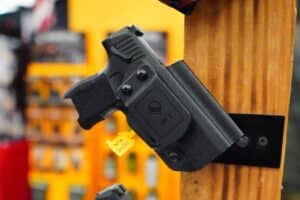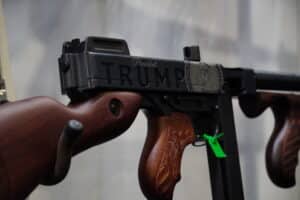“Ghost gun” bans are sweeping their way across blue America with Maryland’s legislature sending one to the desk of Governor Larry Hogan (R.) this week.
Earlier this month we covered how gun-carry politics have undergone a revolutionary transformation as liberalized carry laws have swept the nation. But permissive laws surrounding gun carry are not the only policies to see fast-moving adoption. Indeed, gun-control activists have had their own success in recent years.
Take for instance the movement of “red flag” legislation. Those laws generally allow police or family members (or others depending on the state) to petition a state court to order the temporary removal of firearms from a person who may present a danger to others or themselves. Though temporary, the orders can often be obtained in special hearings without the accused present which has led Democrats and Republicans to fall mostly on opposite sides of the issue.
In the mid-2000s, only two states—Connecticut and Indiana—had versions of this legislation on the books. By 2017, the number had grown slightly to five states. Now, 19 states plus the District of Columbia have some form of process to allow for the court-ordered seizure of firearms from someone deemed a risk to themselves or others. That represents a nearly fourfold increase in the adoption of the policy over just the past five years.
Unfortunately for advocates, adoption of “red flag” laws appears to have stalled with the remaining holdout states having electorates that are generally opposed to the idea. However, gun-control activists have begun chalking up wins on another policy as of late. It’s one that could very well share a similar trajectory: “ghost gun” regulation.
“Ghost gun” is the name given by gun-control activists to any firearm that does not have a serial number. However, it is generally used to refer to homemade firearms often constructed with the help of a 3D printer or CNC machine. Homemade firearms have been legal since the founding, but they have exploded in popularity among hobbyists over the last decade as improvements in technology have democratized the process of manufacturing well-functioning firearms. At the same time, they have experienced increased scrutiny from lawmakers and the media.
Reports of their increasing prevalence in crime have also added to the scrutiny, though the true extent of their use in crime can be difficult to parse. Reports on “ghost guns” at crime scenes often don’t break out counts of homemade firearms from traditionally manufactured firearms that have had their serial number illegally removed.
Though self-manufacturing a non-serialized firearm for personal use remains legal under federal law for those who aren’t otherwise prohibited from owning guns, California became the first state to crack down on the practice in 2016. It began requiring all homemade gun makers to pass a background check, engrave a serial number into guns they make, and register them with the state. Since then, the restrictions have only gotten more stringent in California and other deep blue states.
Now, nine states plus the District of Columbia now have adopted policies regulating the sale, transfer, manufacture, and/or possession of unserialized firearms and firearm parts. That number could grow to ten states in the very near future, depending on what Governor Hogan decides to do with his state’s proposal.
Beyond movement at the state level, several municipalities have also taken steps to ban unserialized guns and gun parts. At the federal level, President Joe Biden (D.) has directed the ATF to initiate a new rule that would redefine what constitutes a firearm under the law in order to crack down on parts kits for making homemade firearms. The finalized rule is currently expected to be published in June.
If the final version is anything like the initial proposal, advocates of “ghost gun” regulation will have achieved something neither gun carry proponents nor “red flag” law supporters have been able to achieve thus far: a tangible policy victory at the federal level.
It remains to be seen if “ghost gun” laws will continue to pass in other blue states that don’t yet have any regulation on the books. It seems likely that the laws will at least share a similar trajectory as red flag laws did, particularly as the issue of homemade firearms continue to get mainstream media attention.







Only Members can view comments. Become a member today to join the conversation.